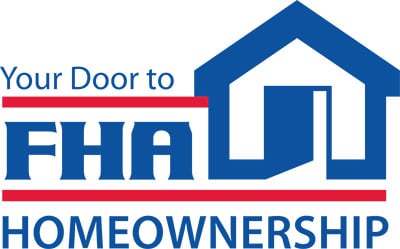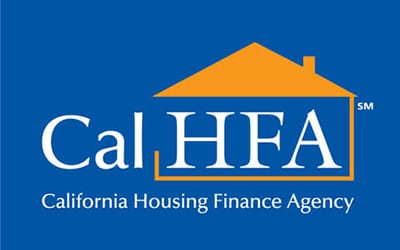San Diego is known for its beautiful beaches, sunny weather, and thriving economy. With a strong job market and attractive lifestyle, it’s no wonder that many people dream of buying a home in this desirable city.
But before you start hunting for your dream home, one important question to consider is: how much house can you afford in San Diego?
How To Calculate How Much House You Can Afford
Purchasing a home is a major financial decision, especially in an expensive city like San Diego. Before beginning your search for the perfect house, it’s important to determine how much you can realistically afford.
When determining how much house you can afford, it’s important to consider your long-term goals. Are you planning on starting a family? Will your income increase in the future? These factors should be taken into account when deciding on a budget for your new home.
Here are some steps to help you calculate your housing budget.
Calculate Annual Income For Your Household
The first step in determining how much house you can afford is to calculate your annual income. This includes not only your salary, but also any additional sources of income such as investments or rental property. It’s important to use your gross income (before taxes) rather than your net income, which takes into account taxes and other deductions.
28/36 Debt To Income Rule
Lenders use a rule called the 28/36 ratio to determine how much house you can afford. This means that your monthly mortgage payment, including principal, interest, taxes and insurance (PITI), should not exceed 28% of your gross monthly income. Additionally, your total debt payments, including credit card bills, car loans, and student loans, should not exceed 36% of your gross monthly income.
What Are Some Examples of Monthly Debt Payments?
Examples of debt payments that can impact your ability to afford a home in San Diego include your monthly mortgage payment, which is the most significant debt payment for most homeowners. In addition to your mortgage, other monthly debt payments taken into account are car loans, student loans, minimum credit card payments, personal loans, and any other recurring debt obligations that require monthly payments. It’s crucial that these monthly payment commitments, when combined with your proposed monthly mortgage payment, do not exceed the recommended 36% of your gross monthly income as per the 28/36 rule to ensure financial stability and loan approval from lenders.
Other Factors to Consider
While your income and debt play a major role in determining how much house you can afford, there are other factors to consider as well. Your credit score, employment history, and overall financial health will also be taken into consideration by lenders when determining your eligibility for a mortgage.
How Much Do I Need For A Down Payment?
In San Diego, a down payment of 20% is typically recommended to avoid private mortgage insurance (PMI). However, there are options available for lower down payments, such as FHA loans which require only 3.5% down. Keep in mind that a larger down payment will result in a lower monthly mortgage payment.
Additional Costs
Aside from the down payment and monthly mortgage payments, there are other costs associated with purchasing a home in San Diego. These can include closing costs, property taxes, homeowners insurance, and maintenance fees. It’s important to factor these into your budget when determining how much house you can afford.
Get Pre-Approved
Before beginning your home search, it’s crucial to get pre-approved for a mortgage by a lender. This will give you a clear understanding of how much house you can afford and will also make you a more competitive buyer in the San Diego housing market.
Types Of Home Loans Available
In addition to traditional mortgages, there are other types of home loans available that may be a better fit for your financial situation. These include adjustable-rate mortgages (ARMs), jumbo loans, and government-backed loans. It’s important to research and compare different loan options to find the best fit for you.
Adjustable-Rate Loan
An adjustable-rate mortgage (ARM) is a home loan with an interest rate that can change periodically. This means that the monthly payments can go up or down. Typically, ARMs start with a lower interest rate than fixed-rate mortgages, which can make them more affordable in the short term. However, since the rate can adjust, there is a potential risk for higher payments over time.
ARMs are structured with an initial fixed-rate period, followed by a period where the rate adjusts at pre-determined intervals, such as annually or monthly. The adjusted rate is calculated based on a benchmark or index, plus an additional spread, known as the loan’s margin. It’s vital for borrowers to understand the frequency of rate adjustments, the index used, the margin, the interest rate cap structure, and the loan’s maximum rate to fully assess the risks and benefits of an ARM.
Fixed-Rate Loan
A fixed-rate mortgage is a loan where the interest rate remains constant throughout the entire term of the loan, which means that your monthly mortgage payments stay the same from month to month. This consistency provides stability and makes it easier to budget for homeowners, as they can predict their housing costs over the long term without worrying about fluctuations in interest rates.
Fixed-rate loans are popular among buyers who plan to stay in their homes for an extended period of time and prefer a predictable payment schedule. These mortgages can come in various terms, with the 15-year and the 30-year fixed-rate mortgages being among the most common. While the 30-year term offers lower monthly payments spread out over a longer period, a 15-year term means higher payments but allows homeowners to pay off their mortgage faster and save money on interest charges in the long run. When considering a fixed-rate mortgage, it’s essential for borrowers to weigh the pros and cons in relation to their financial situation and housing market trends.
Federal Housing Administration (FHA) Loan
A Federal Housing Administration (FHA) Loan is a mortgage insured by the FHA and backed by the federal government. Designed for low-to-moderate-income borrowers, it typically requires a lower minimum down payment and credit score than many conventional loans. An FHA loan can be an attractive option for those who might not qualify for a standard mortgage due to their financial situation.
FHA loans require a down payment as low as 3.5%, making homeownership more accessible, particularly for first-time buyers. Borrowers must pay for mortgage insurance, which protects the lender from a loss if the borrower defaults on the loan. This insurance comes in the form of an upfront premium, which can be rolled into the loan amount, and an annual premium that is split into monthly payments.
The FHA sets limits on how much you can borrow based on the area you live in and the type of home – such as single-family or multi-family homes. While FHA loans offer flexibility for borrowers with less-than-perfect credit, there are specific requirements, including a property appraisal from an FHA-approved appraiser and the home must meet certain minimum property standards and requirements for living safely and soundly.
USDA Loan
A USDA loan is a mortgage loan offered to rural property owners by the United States Department of Agriculture. Aimed at aiding low-to-moderate-income individuals and families in purchasing, renovating, or building homes in rural areas, these loans are part of the USDA Rural Development Guaranteed Housing Loan Program. One of the key benefits of a USDA loan is that it allows for 100% financing, meaning a down payment is not required, which makes homeownership more attainable for those with limited savings.
To qualify for a USDA loan, applicants must meet income eligibility which is determined by their household income being at or below the median income level for the area with adjustments for family size. Additionally, the property being purchased must be located in an eligible rural area as defined by the USDA.
USDA loans are favorable for their low interest rates and typically do not require a borrower to purchase private mortgage insurance (PMI), which is an added savings. Instead, there is a guarantee fee that can be rolled into the loan amount. The loan terms are usually for 30 years with fixed interest rates, making USDA loans especially attractive to first-time homebuyers seeking to enter the property market with little to no down payment and predictable monthly payments.
VA Loan
A VA loan is a mortgage loan in the United States guaranteed by the Department of Veterans Affairs (VA). The program is for American veterans, military members currently serving in the U.S. military, reservists and select surviving spouses (provided they do not remarry) and can be used to purchase single-family homes, condominiums, new-built homes, and for making home improvements.
Unlike other loan types, a VA loan does not require a down payment or private mortgage insurance (PMI), making it an exceptional offer for those eligible. While the VA does not issue the loans directly, it does guarantee a portion of the loan, which enables veterans to obtain a mortgage with favorable terms, such as better interest rates and underwriting standards. Eligible individuals can apply for a VA loan through a lender who participates in the VA home loan program.
The loan does come with a one-time VA funding fee, which can either be paid in cash at closing or financed within the loan. The funding fee varies depending on several factors, including the type of loan, the size of the down payment, and whether the borrower has previously used a VA loan. This fee helps to lower the cost to taxpayers of the VA loan. VA loans are a powerful benefit of military service, and as such, they offer advantages that are not available to the general public, providing veterans with a significant hand-up in owning a home.
California Housing Finance Agency (CalHFA)
The California Housing Finance Agency (CalHFA) aims to support the housing needs of Californians by providing a variety of financial products and services to assist homebuyers. Established to help low and moderate-income individuals afford a home within the state, CalHFA offers programs that include below-market interest rate mortgages, down payment assistance, and grants that can be instrumental in achieving homeownership.
First-time homebuyers in California often find CalHFA programs to be a gateway to owning their first home. The agency’s first mortgage programs, coupled with its down payment and closing cost assistance, can significantly lower the barrier to purchasing a property. For example, the MyHome Assistance Program offers a deferred-payment junior loan to assist with the down payment and closing costs, while the Zero Interest Program provides a junior loan that only becomes payable upon refinancing, selling, or at the end of the loan term.
CalHFA also provides educational resources, including homebuyer education and counseling that prepares buyers for the responsibilities of homeownership. Their focus on sustainability and affordability helps ensure that Californians can find a safe place to call home, making it beneficial for both the homebuyers and the local communities. Working with a network of preferred loan officers who are familiar with CalHFA’s programs, guidelines, and processes, the agency strives to make the path to homeownership as smooth as possible for those who serve the state by living, working, and investing in Californian communities.
When To Seek Professional Help
San Diego home buyers should seek professional assistance from a financial planner at Next Gen Financial Planning to navigate the complexities of California’s dynamic real estate market. Specializing in crafting strategies tailored to individual financial circumstances, these experts provide invaluable insights into how best to allocate resources for a home purchase. Considering factors such as the fluctuating property values in San Diego’s diverse neighborhoods, potential tax implications, and the intricate web of available financing options, such as CalHFA programs, financial planners can help maximize buying power and avoid costly mistakes. They offer not only practical financial planning but also personalized advice that aligns with each buyer’s long-term goals, ensuring that the decision to buy a home is financially sustainable and contributes to their overall financial health.
Conclusion
Buying a house in San Diego can be an overwhelming process, but by following these steps and considering all factors involved, you can determine how much house you can afford. Remember to also consult with a trusted real estate agent or financial planner who can provide guidance and help you find the perfect home within your budget.
Frequently Asked Questions
What is a debt-to-income ratio and why is it important for loan programs?
The debt-to-income ratio (DTI) measures the percentage of a borrower’s gross monthly income that goes toward paying debts, and it is a critical factor mortgage lenders consider when determining loan eligibility. This ratio helps lenders evaluate a borrower’s ability to manage monthly payments and repay debts. For most loan programs, a lower DTI can increase the probability of being approved for a mortgage.
How do I find the right mortgage lender for me?
To find the right mortgage lender, research and compare various lenders in terms of their interest rates, loan terms, customer service, and overall reputation. It is essential to look for lenders that are experienced with the specific loan programs you are interested in. Additionally, consult with financial advisors or real estate agents who can provide referrals. Always ask potential lenders questions about their products and get a clear understanding of the fees and requirements.
Are annual property taxes included in mortgage payments?
Yes, lenders typically include annual property taxes in your monthly mortgage payment. This is done through an escrow account, from which the lender will pay the property taxes on your behalf when they are due. This spreads your tax liability over the entire year and ensures that they are paid on time to avoid penalties.
What portion of my monthly mortgage payment is tax-deductible?
The tax-deductible portion of a mortgage payment typically includes the interest paid and any property taxes that are part of the monthly payment. Points or origination fees, if any, paid during the mortgage closing can also be tax-deductible. Always consult with a tax professional to understand the current tax laws and what deductions you’re eligible for.
What amortization schedule do lenders typically use for a standard mortgage?
Lenders typically use a fixed-rate amortization schedule for a standard mortgage. This means that the payment amount remains the same over the course of the loan, with the initial payments largely covering interest and a smaller portion going towards the principal. Over time, the portion of the payment that goes toward the principal increases, allowing the borrower to build equity in the property.
Does the monthly payment on a mortgage change over time?
Your monthly mortgage payment can change over time if you have an adjustable-rate mortgage (ARM) or if your property taxes or homeowner’s insurance premiums fluctuate. For fixed-rate mortgages, the principal and interest portion of your payment will remain the same throughout the life of the loan. However, if your insurance or taxes go up, and they are escrowed as part of the monthly payment, your total payment could increase. It’s important to review your mortgage statement annually to understand changes in your payment, especially if you have a loan structure where the interest rate can change.




